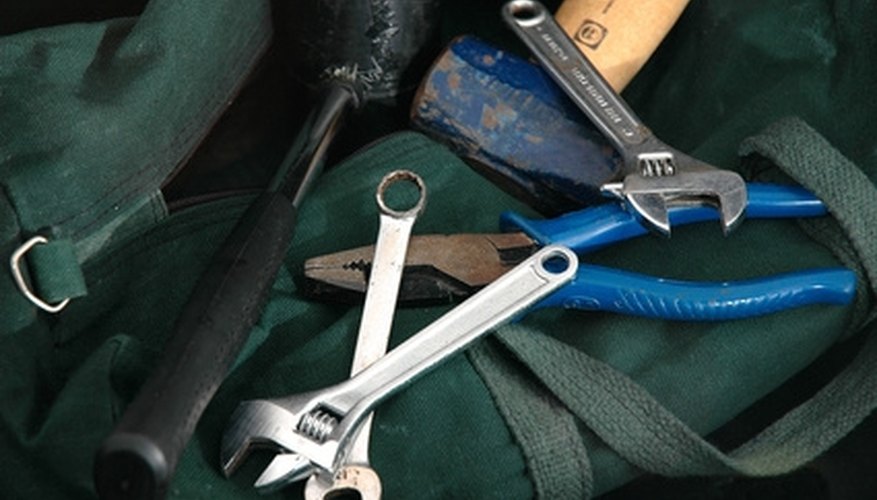
A marine toilet, called a head by sailors, has a more delicate system as opposed to a standard household toilet, given its plumbing set-up and exposure to sea water. The main mechanical problems for a marine toilet tend to be related to water flow such as blockage, leaking, odors or the manual or electric pump mechanism. Technological advancements have led to the introduction of the vacuum flush marine toilet, which has eased the use and odor problems of traditional heads, yet has added a level of complexity to repairs. Raritan is one of the leading manufacturers of marine toilets, with several different model types including Compact, PH II manual, or PHEII, Crown Head, Atlantes and the electric Marine Elegance.
Items you will need
Screwdriver
Adjustable wrench
Pliers
Owner's manual
Identify which Raritan marine toilet that you have, either by the owner's manual or by identifying the model on Raritan's website.
Find the Raritan toilet's "Exploded Parts View" diagram in the manual or on Raritan's website. This diagram provides the owner with a complete breakdown of the entire toilet by part, making it easier to identify the problem and order replacement parts.
Determine what main issue could be creating problems with the toilet. For example, pump or flush the toilet and determine whether water is flowing in during the open position and out, when in the closed position. When pumping the manual handle on the toilet, if applicable for the model, watch the connected parts on the right hand side as you pump. If the toilet is pumping or flushing properly with no leaking, the issue may instead be with the water intake, outtake or holding tank hoses attached to the toilet.
Follow the line of parts included in the "Exploded Parts View" diagram. Given that the majority of marine toilet attachment parts are made of plastic, a crack or complete break in one of these parts is usually where the problem lies. For example, for Raritan's PHII marine toilet, part number 1210 or part number 1211PL often cracks after extensive, prolonged use.
Check the motor or pump for the toilet if the head is electric rather than manual. Use Nigel Calder's book, "Boatowner's Mechanical and Electrical Manual" to troubleshoot and repair the motor on the toilet.
Observe whether there is leaking around the base of the toilet. If there is leaking, the seal needs to be checked and replaced. On a vacuum flush marine toilet, a common problem is that the pump starts up on its own and then shuts off. If water flows out of the toilet very slowly or there is a hissing sound, then the seal on the toilet could be faulty. Buy an appropriate repair kit for your Raritan toilet model and remove the toilet bowl from its base to complete this particular type of repair.
Detect whether any foul odors emanate from the head when flushed. Odors are more prominent if the marine toilet utilizes sea water rather than fresh water. To correct this problem, add a deodorizer and pump or flush this through the system. If the odor remains, check the holding tank -- a tank that collects waste not flushed overboard -- to make sure it is not full. Also check the plumbing hoses connected to the tank for clogging. A severe odor problem may require the removal and thorough cleaning of the toilet bowl and associated hoses.
Warnings
- Make sure to close the seacock connected to the head that you are working on before you start any significant repairs to the marine toilet.
Tips
- If all else fails with attempting to repair your Raritan marine toilet, call in a local, certified boat mechanic to troubleshoot the problem and complete the identified repairs.
References
Tips
- If all else fails with attempting to repair your Raritan marine toilet, call in a local, certified boat mechanic to troubleshoot the problem and complete the identified repairs.
Warnings
- Make sure to close the seacock connected to the head that you are working on before you start any significant repairs to the marine toilet.
Writer Bio
Anne Redler is a writer who has worked in research and publishing since 1996. She has published work on the topics of macroeconomics and financial markets, including articles in the "Financial Times" and "The Wall Street Journal." Redler holds a Bachelor of Arts in economics from Wilfrid Laurier University and a Master of Business Administration from Boston University.



